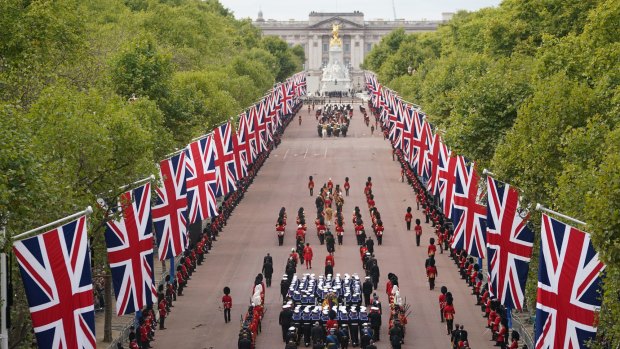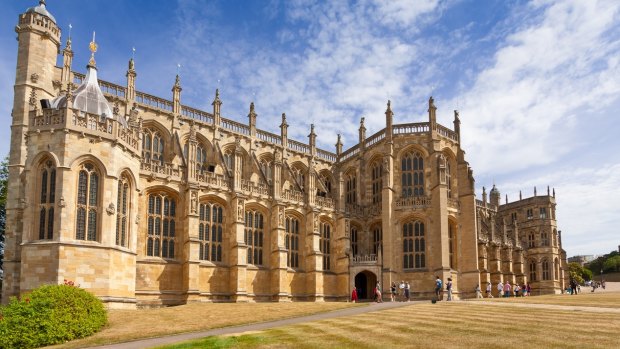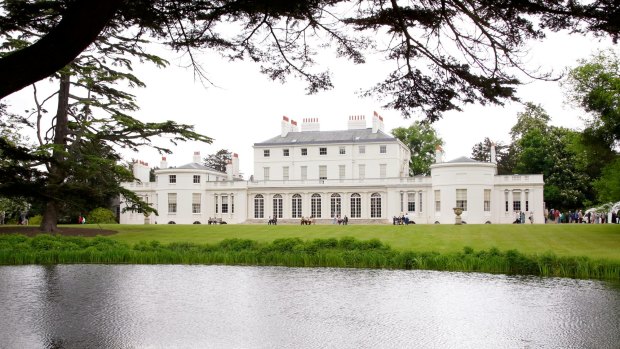This was published 1 year ago
Queen Elizabeth II funeral: Tourism boost for UK expected after global coverage
By Katherine Scott

The State Gun Carriage carries the coffin of Queen Elizabeth II in the Ceremonial Procession down The Mall following her State Funeral at Westminster Abbey on September 19, 2022.Credit: Zac Goodwin/Getty Images
Thousands of visitors flocked to London to pay their final respects to Queen Elizabeth II, delivering a significant boost to the city's tourism sector.
And with the state funeral garnering record global broadcast numbers, the United Kingdom may be in for another much-needed visitor bump, according to one royal expert.
Viewership for Queen Elizabeth II's funeral may never be truly known – in Australia, TV audience numbers peaked at 3.46 million metro viewers, though media reports estimate upwards of four billion viewers globally but even official TV ratings only tell a fraction of the story.

Historical sites featured prominently in the Queen's funeral procession, like St George's Chapel (pictured), will be of particular interest.Credit: iStock
However, the effects of previous large-scale royal events on UK tourism are well documented.
Dr Cindy McCreery, head of the Modern Monarchy in Global Perspective Research Hub and senior lecturer in history at the University of Sydney, noted a clear link between past royal events and a surge in foreign visitor numbers to royal landmarks.
"The wedding of Charles and Diana at St Paul's Cathedral in London in 1981 had a big bump on not just tourism to London but specifically to St Paul's," said McCreery.

In 2019, Frogmore House, Harry and Meghan's residence at the time, was among the most popular royal residences to visit.Credit: Max Mumby/Indigo/Getty
This peak in interest around royal landmarks following a major royal event may be further bolstered by proposed changes to the royal residences that would make it easier for international tourists to visit.
"Traditionally, Buckingham Palace has only been open to visitors for two months in July and August – when the Queen was at Balmoral – and that's going to change," said McCreery.
"King Charles has said that he wants to open royal residences to public access more, so tourists will be able to visit Buckingham Palace more readily than they can at the moment."
The changes are believed to extend to Buckingham Palace, Windsor Castle, Balmoral, Sandringham and Clarence House, with plans to make them available for longer periods of the year and with more rooms available to view.
This includes plans to extend visiting times for Sandringham from the current April to October window, to all-year round.
McCreery noted that the historical sites featured prominently in the late monarch's funeral procession will be of particular interest.
"People will have seen Westminster Hall, they'll have seen Westminster Abbey, they'll have seen St George's Chapel and they'll think 'maybe I'll go and visit'," she said.
Patricia Yates, chief executive for the UK's national tourism body Visit Britain, said research showed exploring Britain's history and heritage is the top motivator for international visitors.
"We are inspiring people to book a trip to come and see our world-renowned attractions, our culture, heritage and history for themselves and, as we look ahead to the Coronation of King Charles III, to be part of the once-in-a-lifetime experiences that you can only have in Britain," she said.
McCreery said there is a particular interest in the younger members of the royal family, driven by players such as Prince William and Kate Middleton, and Prince Harry and Meghan Markle.
"These are very photogenic, beautiful people that people like to learn more about. I think any opportunity that people have to find out more about their lives, via the places that they go to, is going to help tourism," she said.
Income from ticket admissions to British royal residences amounted to approximately 50 million British pounds ($85 million) in 2019, with Windsor Castle and Frogmore House, Harry and Meghan's residence at the time, among the most popular residences to visit.
The royal-led tourism boost comes as the UK tourism sector struggles to attract international visitors at the same rate of its European neighbours.
According to the most recent Australian Bureau of Statistics overseas arrivals data for July 2022, the UK was the third leading overseas destination for Australians with 66,480 trips that month – around 71 per cent of 2019 levels. This follows New Zealand (96,180) and Indonesia (86,160).
Since Australian travel restrictions lifted in January 2022, the UK has seen an exponential rise in recovery from the Australian market, with flight bookings from Australia frequently exceeding pre-pandemic levels, according to Visit Britain.
The UK's recovery lag has been blamed on a combination of pandemic and political setbacks, including soaring COVID rates just as neighbouring countries were stabilising late last year, and the effects of Brexit finally coming to roost.
Last month, Visit Britain unveiled a revised 2022 tourism forecast of £21.6 billion ($36.8 billion) in visitor spend for the year – around 76 per cent of 2019 levels.
Sign up for the Traveller Deals newsletter
Get exclusive travel deals delivered straight to your inbox. Sign up now.